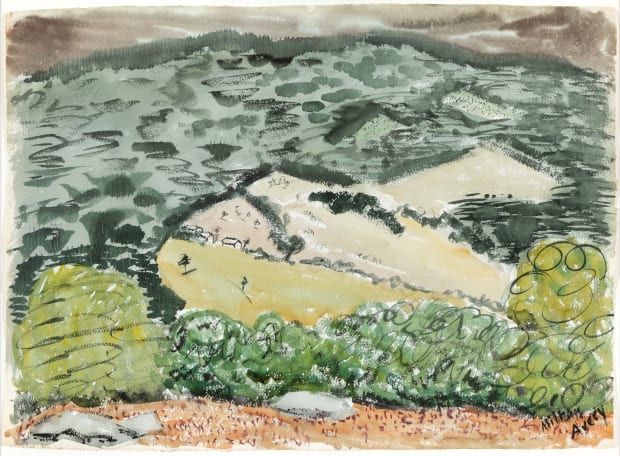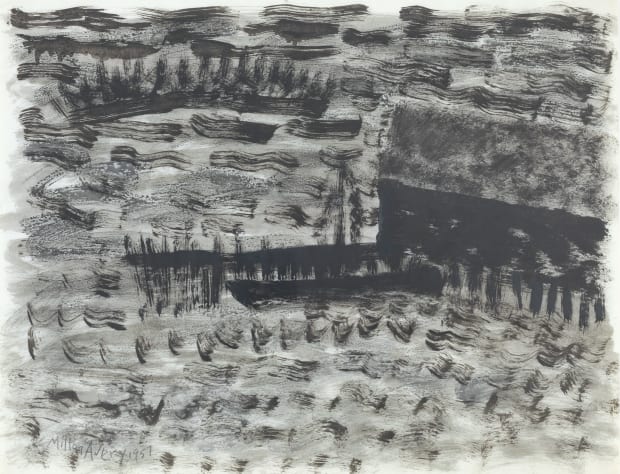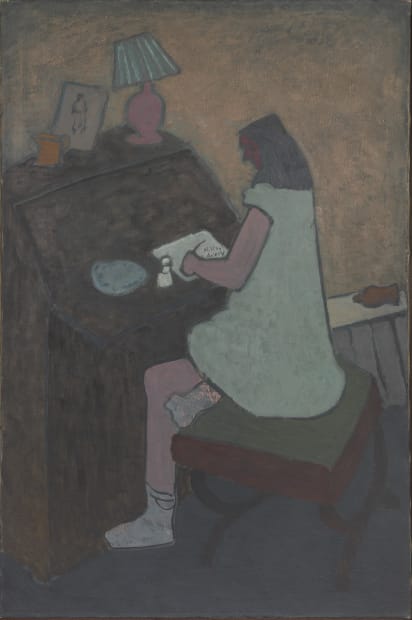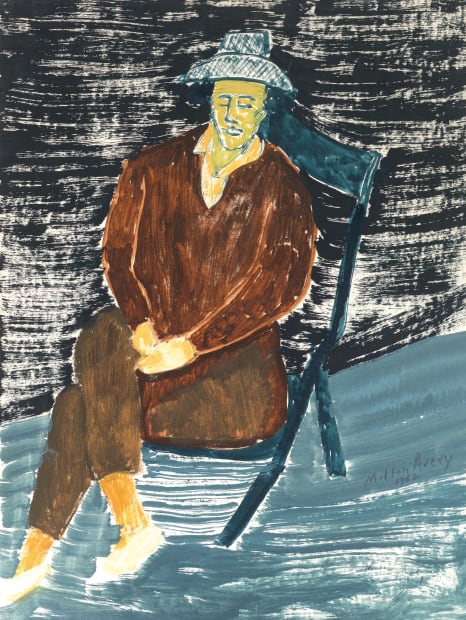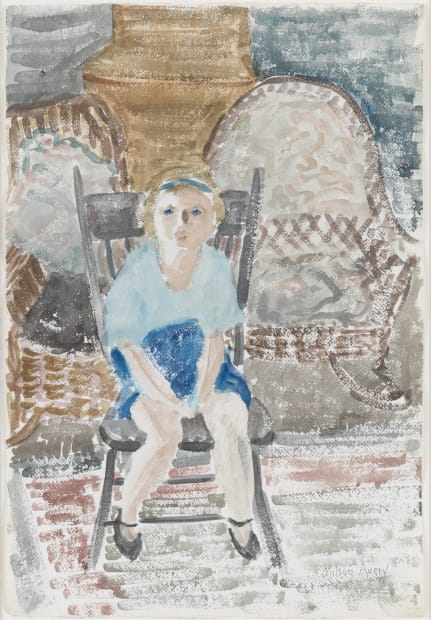-
-
Milton Avery
A Sense of PlaceKeenly aware of the grand landscape tradition, as practiced by Thomas Cole and Albert Bierstadt of the Hudson River School, Avery deliberately chose a non-heroic exploration of the canvas. Accessible and intimate, as if they are views from a kitchen window, Avery’s paintings reject outsized ambition yet leaves us with an enduring sense of place. He managed to enhance the role of nature, not through grandeur, but through evocations of quiet emotion. Using raw canvas and sparse pigment, Avery often applied color more as stain than painted surface, a technique that can be seen as an influence on color field painting. Avery created a world of outlined and interlocking forms to represent the flattened landscape. Throughout his artistic career, color remained the dominant force, especially as he became less concerned with subject details. This brought greater focus to the shapes and colors within them. Avery’s art is liminal - not fully abstract and yet not distinctly figurative. As a consequence, over time, his work has been hard to classify into a single category.
Waqas Wajahat
-

-

-
-
-

-
"With its striking simplification of form and composition, Avery's late work constitutes a powerful closing chapter to his life in art. Like Henri Matisse or Paul Klee, whose careers culminated in bold and powerful expressions of a vision honed over a lifetime, Avery's late works also draw upon decades of artistic creation while at the same time revealing new perceptions and syntheses that look forward to the next chapter in America art, a chapter in which timeless ideas are conveyed by deliberately iconic canvases on a scale large enough to confront and envelop the viewer."
Eliza Rathbone, Chief Curator at The Phillips Collection
-

-

-

-
-

-

-

-

-

-
-

-

-
-

-

-

-
-

-

-

-

MILTON AVERY
Current viewing_room



